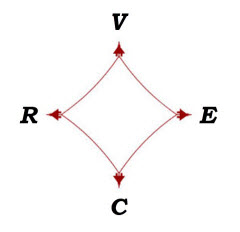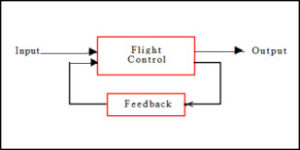The Cockpit Leader
Federal Air Regulations state:
The pilot in command of an aircraft is directly responsible for, and is the final authority as to, the operation of that aircraft.
This statement is clear and concise. It leaves no room for ambiguity. It is not open to interpretation.
The regulations express an individual freedom conferred on all pilots who assume command without regard to age, experience or type of aircraft flown. This freedom requires assumption of responsibility but also grants the right to act decisively when performing the duties of command.
To command is to lead. How do we prepare for this responsibility? How do we ensure leadership qualities are developed, nurtured and sustained? Cockpit Leadership will strive to provide meaningful answers to these and similar questions.
Cockpit Leadership Requisites
Cockpit leaders maintain awareness of all aspects of their flights including the changing and dynamic flight environment in which they operate. Due to preparation and foresight they are confident as they track progress and develop strategies to complete tasks and address anomalies that may arise.
Knowledge of the aircraft and its systems performance and human factors limitations are leadership prerequisites. In addition, the members of the cockpit crew ensure that their responsibilities are clearly defined, that agreement is reached on strategies to be pursued and that potential conflicts are resolved. Even flying alone, the pilot-leader values and respects the contributions of aviation personnel who help make safe flight possible.
In this three-dimensional world, pilots form mental images of situations that exist or may exist during flight and project alternative solutions to a difficulty should one materialize. Pilot-leaders face reality and think and act with determination and integrity.
This Cockpit Leadership undertaking will expand upon these leadership requisites by presenting a mental framework based on sound leadership principles and by applying this structured process to the operational flight environment.
Introducing the Leadership Diamond©
Individual leadership traits are mentioned in inspiring graduation speeches, but words and slogans are inadequate and empty in the heat of the moment. Pilots assess developing situations and act strategically according to their experiences, training and beliefs.
On reading the About page, you will get see that Dr. Peter Koestenbaum granted the use of his Leadership Diamond© model with its strategic approach to leadership thinking for this effort to promote safe flying.
In this Cockpit Leadership presentation the leadership strategies—Vision, Courage, Reality, Ethics—are developed and applied to flight situations. Please take a moment to think about the scope of these disciplined strategies—every oft-cited leadership trait is embodied in one or more of the diamond’s strategies.
The Leadership Image
The interrelationship of the four leadership dimensions is shown by Peter in his simple but effective mental model:

The Leadership Diamond©
Vision: to see the larger perspective
Courage: to act with sustained initiative
Reality: to have no illusions
Ethics: to serve based on principled standards*
*Slightly expanded to reflect the operational flight environment.
The diamond image represents the potential scope and quality of an individual’s leadership ability. In fact it represents the leader’s mind at work with each of the diamond’s forces—vision, courage, reality, ethics—thrusting outward and keeping the diamond taut. Consider this mental image as a flexible membrane, alert and active, with all the forces equally balanced.
The balance of forces is maintained since the pilot-leader knows that vision without courage is dreaming, blind courage is foolhardy and ethical violations place others at risk.
Applying the Leadership Model
Within the subscriber Hangar 13 section of Cockpit Leadership, the many dimensions of leadership are considered in a variety of flight circumstances. In each instance the four Leadership Diamond© strategies are described in detail accompanied by related thought processes and actions.
As one introductory example, please read again the opening FAR statement, “The pilot in command of an aircraft is directly responsible for, and is the final authority as to, the operation of that aircraft.” Its visual diamond presentation is:

PIC
Vision: My goals are clear
Courage: I claim the authority entrusted in me
Reality: I am accountable
Ethics: I am responsible
When forming this mind-view every pilot should pause to cherish the freedom granted when climbing into the cockpit.
This basic example gives an indication of how the Leadership Diamond© model might be employed. In the Hangar 13 subscriber section the diamond will be applied to a number of aviation issues or situations including those related to the aircraft and its systems, the flight environment, pilot judgment and decision making, risk management and incident or accident critiques.
It is important to emphasize that the application of the Leadership Diamond© is fully compatible with and may well enhance CRM and risk management pilot training programs or SHELL and Reason model applications and concepts.
Further Thoughts
Pilots honor and respect the freedom they enjoy in flight and are confident facing the attendant risks. When gaining experience in instrument flying conditions, they learn to picture accurately and in detail their aircraft’s performance, progress, attitude and position from reading and understanding their flight instruments. In short, pilots paint mental images and visualize present situations and those that may lie ahead.
The Leadership Diamond© is a natural fit. It brings form and substance to the pilot’s actions, decisions and projections. In flight the diamond use is specific. Situations are evaluated and choices made. Risks are analyzed and mitigations planned. Decisions are made and actions taken.
The leadership mind is flexible and adapts to new and changing situations. A diamond forms naturally as a mental image for each event or circumstance. A situation may be resolved or may later be recalled at appropriate times until there is a final resolution. The cockpit leader maintains situational awareness and is comfortable visualizing a variety of interrelated diamond images.
Subscribe!
The diamond is not simply another tool in a pilot’s safety toolbox. In terms of cockpit leadership and the development of flight strategies, it is the toolbox.
This website is established for pilots of various experience levels. Please be encouraged to click on the yellow Subscribe button, answer a brief series of questions related to flight qualifications and experience, establish a user name/login and go to the Hangar 13 subscriber section.
Join your colleagues in sharing your interests and experiences.
[Press ESC to Close]


